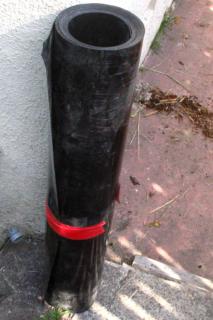

Even though your bamboo has been properly settled in the garden for years already, you must stay alert. The need to control invasive bamboo is a constant endeavor!
Bamboo growth must be constrained if you don’t want your garden to turn into an impenetrable jungle.
How can one avoid having bamboo turn invasive? Are there non-running varieties?
Here are our answers to still have the best of what bamboo can offer, without any of the displeasure.
The best strategy to avoid invasive bamboo is, hands down, to set up a rhizome barrier right upon planting.
This plastic, cement, wood or metal barrier will have to rest at least 24 to 28 inches (60 to 70 cm) deep in the ground, and stand out at least 4 inches (10 cm) above ground level.
 Take note that if you use wood or metal, there’s a high chance that the barrier starts disintegrating after a few years and that the solution doesn’t anymore fulfill its function.
Take note that if you use wood or metal, there’s a high chance that the barrier starts disintegrating after a few years and that the solution doesn’t anymore fulfill its function.
The method we recommend is to purchase a specific rhizome barrier sold by the roll that is a sheet at least 1/10th to 1/3rd inch (0.3 to 0.8 cm) thick.
The rhizome generally doesn’t crawl any deeper than 16 inches (40 cm) deep, but as a precaution, the depth of 24 inches (60 cm) is recommended to ensure you won’t have any bad surprises.
Let’s say you weren’t walked through that, and you innocently planted your bamboo without any protection nor rhizome barrier at all – and now you want to get things back under control.
The roots can run underground for several yards (meters) before popping up out of the ground as culms.
This is what explains why bamboo planted along your property line start growing in the neighbor’s garden…
Lastly, for very invasive bamboo that has been growing for years, the only effective solution is to pull out the clump.
There are many bamboo varieties that are clumping, especially in the Fargesia family. These are indifferently called non-running or clumping varieties.
These bamboo have the advantage of growing very densely. Their roots only very inch around the clump and never spread out very far. They’re not very invasive.
Among the clumping bamboo varieties, here are a few names:
Here, you’ll find all our advice on how to grow bamboo.